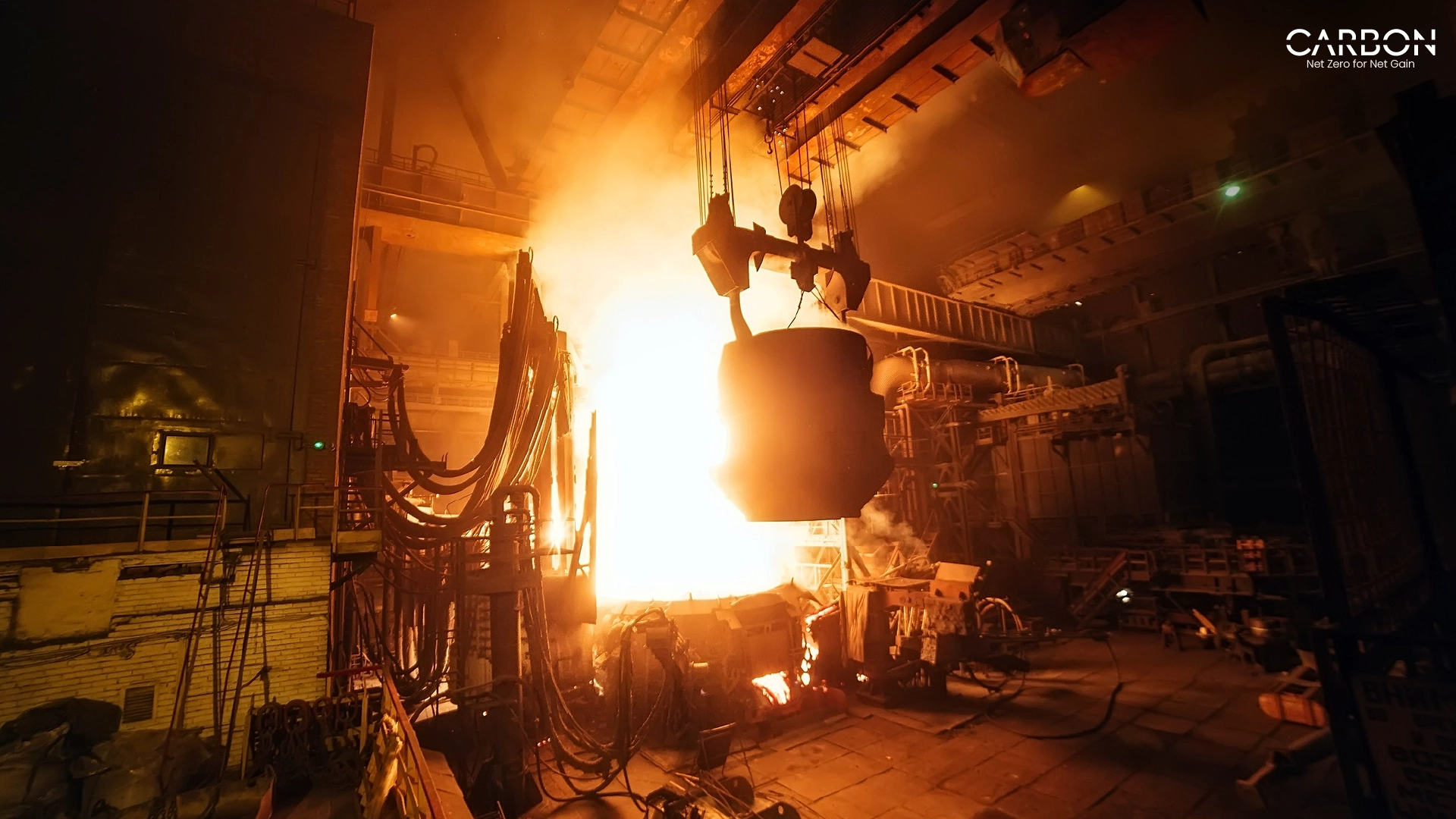In the face of environmental uncertainties and economic volatility, the role of a Chief Operations Officer (COO) isn’t limited to day-to-day operations.
Today, it encompasses safeguarding the company’s operational resilience. Yet, how can resilience be fortified in an era where unpredictability seems to be the only constant?
This is where sustainable energy practices come into the picture. A transformative approach that addresses environmental concerns while building a robust, future-proof business model.
But what does integrating sustainability into your operations entail? More importantly, how can it bolster operational resilience?
The reliance on traditional energy practices is a double-edged sword. On one hand, there’s the immediate cost-effectiveness and familiarity of conventional systems.
On the other, the long-term implications of environmental impact, regulatory pressures, and the sustainability of operations.
The Link Between Sustainable Energy Solutions and Operational Resilience
In the strategic chessboard of corporate operations, sustainability and operational resilience are two kings moving in sync.
Understanding the Core of Operational Resilience
Operational resilience is the capability of a business to continue delivering its critical functions amidst a variety of disruptions. This resilience is akin to a buffer, absorbing shocks and stresses without fracturing. It’s about the capacity to adapt, recover, and thrive in the face of change.
Sustainable Energy Solutions: The Backbone of Resilient Operations
Risk Mitigation:
Diversifying energy sources reduces dependency on a single energy supply. It mitigates risks related to energy availability and price volatility.
Renewable energy sources, such as solar and wind, are less susceptible to global market fluctuations, ensuring more predictable operational costs.
Regulatory Compliance:
With the tightening of environmental regulations, investing in sustainable energy systems future-proofs businesses against regulatory risks and penalties.
This proactive approach positions companies as leaders in corporate responsibility.
Operational Flexibility:
Energy-efficient operations are leaner, more flexible, and adaptable to change.
By minimizing energy waste and optimizing resource use, companies can swiftly adjust to market and environmental shifts. It helps maintain continuity and competitive advantage.
Cost Efficiency:
The long-term savings of sustainable energy solutions are substantial, offsetting initial investment costs.
Reduced energy costs, along with incentives and tax breaks for sustainable practices, contribute significantly to the bottom line.
Brand Reputation and Stakeholder Confidence:
Adopting sustainable practices enhances a company’s reputation, attracting customers, investors, and talent who prioritize environmental responsibility.
This social capital is invaluable in building trust and loyalty, key components of resilience.
The Roadmap Towards Sustainable Business Operations
Step 1: Conduct a Comprehensive Energy Audit
An energy audit provides a clear picture of where and how energy is used—and wasted—within your operations. It identifies opportunities for energy-saving improvements and serves as the baseline for measuring the impact of future initiatives.
Key Actions:
- Partner with energy audit experts to ensure a thorough evaluation.
- Include all aspects of your operations, from manufacturing processes to office energy use.
- Look for quick wins, such as identifying and fixing leaks.
Step 2: Set Realistic, Measurable Goals
With the insights from your energy audit in hand, the next step is to set specific, realistic goals for reducing your energy consumption.
Key Actions:
- Prioritize initiatives based on impact and feasibility.
- Set both short-term targets and long-term goals.
- Make sure your goals are SMART: Specific, Measurable, Achievable, Relevant, and Time-bound.
Step 3: Develop a Strategic Implementation Plan
With your goals set, it’s time to develop a plan for achieving them. This includes detailing the specific initiatives you’ll undertake, the resources required, and the timeline for implementation.
Key Actions:
- Assign a dedicated sustainability team to oversee the implementation.
- Plan for incremental changes to minimize disruption to your operations.
- Include a budget for sustainability initiatives.
Step 4: Engage and Train Your Team
Sustainability is a team effort, so training the team is critical to your success.
Key Actions:
- Communicate the importance of sustainability and how it aligns with your company’s values.
- Offer training sessions to educate your team on sustainable practices.
- Recognize and reward contributions.
Step 5: Monitor, Measure, and Adjust
Finally, establishing a system for monitoring your progress towards your goals is essential. Regularly measuring your energy use will help you understand the effectiveness of your initiatives. You can also make adjustments as needed.
Key Actions:
- Set up regular reviews of your energy consumption and sustainability metrics.
- Be prepared to adjust your strategies.
- Celebrate your successes and learn from any setbacks.
Navigating Challenges in Sustainable Energy Practices
Initial Investment Costs:
The upfront costs of renewable energy installations and energy efficiency upgrades can be significant. This financial barrier often poses the first major challenge for businesses looking to make the switch.
Technological Integration:
Seamlessly integrating new energy technologies with existing systems can be complex. It often requires specialized knowledge and could disrupt operations.
Stakeholder Buy-In:
Convincing stakeholders of the long-term benefits of sustainable energy practices is difficult. Against the backdrop of initial costs and implementation challenges, it requires effective communication and strategic planning.
Regulatory Navigation:
Understanding and complying with the myriad of local, national, and international regulations related to energy use and sustainability can be daunting.
Strategies for Overcoming Sustainable Energy Transition Challenges
Ensuring Seamless Technological Integration
Adopt a phased approach to integrating new technologies, starting with pilot projects or small-scale implementations. This allows for the identification and resolution of any integration issues before a full-scale rollout.
CarbonMinus seamlessly integrates with existing systems without disrupting operations. For more details, book a demo today and take the first step toward sustainability.
Building a Strong Case for Stakeholder Engagement
Communicate the economic, environmental, and brand value benefits of sustainable energy practices to all stakeholders. Use data and case studies to highlight the potential cost savings, regulatory advantages, and market opportunities.
Navigating Regulatory Compliance with Expertise
Stay abreast of relevant energy regulations and sustainability standards. This requires a proactive approach to regulatory compliance and an understanding of how these regulations impact your business operations and sustainability goals.
The Economic Upside of Sustainable Energy Practices
Unpacking the Cost Savings
Renewable energy sources are becoming increasingly cost-competitive with traditional fossil fuels.
By investing in these renewables, businesses can lock in energy prices and protect themselves against the volatility of energy markets. Over time, the initial investments in renewable energy installations pay off through significantly reduced utility bills.
The Ripple Effects of Sustainability
Sustainability is increasingly becoming a factor in consumer decision-making.
Businesses that adopt sustainable practices tap into a growing market of environmentally conscious consumers. It enhances their brand value and gives them a competitive edge.
This can translate into increased sales, market share, and customer loyalty.
Incentives and Grants
Governments and international bodies are offering a range of incentives, tax breaks, and grants to encourage the adoption of sustainable energy practices.
These financial incentives can significantly offset the initial costs of implementing green technologies and practices.
Risk Management and Regulatory Compliance
Sustainable energy practices serve as a hedge against regulatory risks and potential future costs associated with environmental compliance.
By proactively reducing carbon emissions, companies can avoid future taxes, penalties, and the costs of mandatory compliance measures.
CarbonMinus: Your Partner in Building Operational Resilience
CarbonMinus helps businesses embrace sustainable energy practices with confidence and clarity.
- Customized Energy Audits: Tailored to the unique needs and scale of your operations, ensuring relevance and actionable insights.
- Roadmap for Efficiency: Implementing energy efficiency measures, from quick wins to long-term investments.
- Project Management Support: From planning to execution, ensuring seamless integration of sustainable energy solutions into your operations.
- Continuous Optimization: Leveraging advanced monitoring technologies to ensure energy management systems deliver maximum efficiency and return on investment.
- A Single Source of Truth: Offering a centralized platform for monitoring, managing, and optimizing your energy use.
- Unmatched Support: Beyond technology, CarbonMinus prides itself on its customer-centric approach. We provide ongoing support to ensure your success.
Take The First Step Toward Business Resilience
Reach out to CarbonMinus today!
CarbonMinus can be your guide and partner. Transform your energy practices, drive efficiency, and lead your business into a sustainable future.
FAQs on Integrating Sustainable Practices
What Are The First Steps In Integrating Sustainable Energy Practices Into Existing Operations?
Begin with a comprehensive energy audit to understand your current energy use and efficiency. Set measurable, achievable sustainability goals based on the audit’s findings, and develop a strategic plan for implementing energy efficiency improvements and renewable energy integration.
How Do Sustainability Energy Solutions Contribute To Business Resilience?
Sustainability enhances resilience by diversifying energy sources, reducing dependency on volatile fossil fuels, and mitigating regulatory and market risks. It also improves brand reputation and stakeholder trust, contributing to long-term operational stability and adaptability.
Can Sustainable Energy Practices Also Lead To Cost Savings?
Yes, sustainable energy practices can significantly reduce operational costs. Investments in energy efficiency and renewable energy sources often result in lower utility bills, tax incentives, and reduced exposure to fluctuating energy prices, delivering substantial long-term savings.
What Are The Common Challenges In Shifting To Sustainable Energy Practices And How Can They Be Overcome?
Common challenges include upfront costs, technological integration, securing stakeholder buy-in, and navigating regulatory landscapes. These can be overcome by leveraging financial incentives, adopting a phased implementation approach, engaging stakeholders with a clear business case, and staying informed on regulations and compliance requirements.




